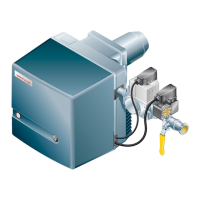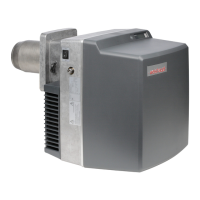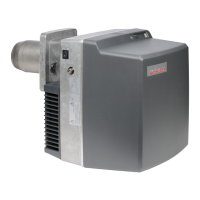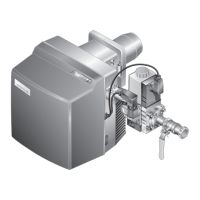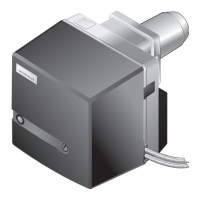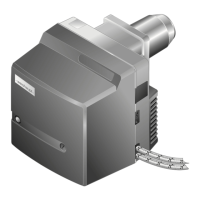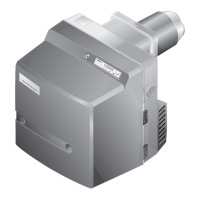
Do you have a question about the Weishaupt WG20 Series and is the answer not in the manual?
| Burner type | Gas burner |
|---|---|
| Series | WG20 |
| Fuel | Natural gas, LPG |
| Efficiency | up to 95% |
| Ignition | Electronic ignition |
| Protection Class | IP 40 |
| Flame Supervision | Ionization probe |
| Operating Voltage | 230 V / 50 Hz |
Explains symbols, target group, and general guidelines for user understanding and safe operation.
Details on installation, safety, and maintenance recommendations for proper burner operation.
Outlines potential hazards, personnel training, organizational, informal safety, electrical safety, and maintenance/fault rectification notes.
Discusses equipment modifications, environmental disposal, noise, gas operation regulations, and characteristics.
Specifies approved uses, model identification, and technical details of the burner.
Explains automatic operation, electronic control, combustion manager, ionization electrode, and actuators.
Details electrical specifications, ambient conditions, and permissible fuels.
Specifies burner firing rates for different fuels and provides a capacity graph for performance.
Provides detailed dimensional drawings and the overall weight of the burner.
Covers checking the burner's rating, capacity graph, and ensuring adequate installation space.
Details the process of attaching the flange, gasket, and installing the burner onto the heat exchanger.
Instructions for rotating the burner by 180° and connecting the gas supply.
Details the process of making the electrical connections for the burner.
Explains the control panel layout, key functions, and how the display indicates operating status and data.
Shows different display messages and their meanings for various operating statuses and errors.
Guides on navigating through Info, Service, Parameter, and Access modes for monitoring and configuration.
Describes the process of linearizing operating points during commissioning for optimal gas operation.
Lists prerequisites for commissioning and guides on connecting measuring devices for ionization current and mixing pressure.
Covers air pressure switch presetting, gas pressure regulator presetting, and determining diffuser/air damper settings.
Details setting the combustion manager, checking operation sequence, and adjusting gas setting pressure.
Guides on setting operating points, adjusting high fire, low fire, and optimizing combustion values.
Covers setting the air pressure switch, checking safety devices, and final concluding steps before handover.
Explains how to perform combustion analysis and calculate gas throughput for safe and economic operation.
Guides on correcting combustion values for safe and economic operation after initial setup.
Provides instructions on how to safely switch off the burner for breaks in operation.
General safety warnings and recommendations for regular maintenance and component replacement.
Outlines the service intervals and procedures for various burner components like motors, valves, and sensors.
Step-by-step guides for removing and re-installing key components such as the mixing head, electrodes, and motors.
Details procedures for setting mixing head, electrodes, service position, blower wheel, and motors.
Procedures for removing/installing gas butterfly valve, air regulator, and replacing combustion manager/fuse.
Describes how the burner indicates faults (display off, OFF, flashes) and general procedures for addressing them.
Provides detailed fault codes, their causes, and rectification steps for qualified personnel.
Lists common operational issues like poor start behavior, pulsating flame, or display problems and their solutions.
